Health care in America sucks and it’s not affordable AMR. That is not just a feeling—it is the reality for millions of Americans today. While the U.S. spends more on health care than any other country, the return on that investment is remarkably poor.
People are going into debt for basic care, skipping essential treatments, and living in fear of getting sick because they simply cannot afford the cost. In this comprehensive article, we explore the depth of the crisis, break down the factors driving the cost, and compare America’s system to other nations that do far better with less.
The High Cost of Health Care in America
The U.S. healthcare system is the most expensive in the world, with national spending exceeding $4.5 trillion annually. On average, an American pays about $14,000 per year on health-related expenses—this includes insurance premiums, deductibles, copayments, and out-of-pocket spending. And still, many don’t receive the care they need.
In fact, even people with full-time jobs and health insurance face financial burdens. Deductibles can easily run into the thousands before insurance begins to cover costs. According to a Gallup study, over one-third of Americans report that they or a family member had to skip medical care in the past year due to cost. That statistic reflects the harsh truth that for many, “health care in America sucks and it’s not affordable amr.”
International Comparison Table
| Country | Avg Cost Per Person (USD) | Universal Coverage | Wait Times | Quality Rating |
| United States | $14,000 | No | Moderate | 2/5 |
| Canada | $7,000 | Yes | Long | 4/5 |
| Germany | $6,800 | Yes | Short | 4/5 |
| UK | $6,500 | Yes | Moderate | 4/5 |
As shown above, other developed nations provide better or comparable care for half the cost and cover everyone.
Insurance Is No Longer a Safety Net
Health insurance in the U.S. is often a false sense of security. A large portion of Americans have employer-sponsored insurance or private coverage but still find themselves unable to afford care when it matters. High deductibles, surprise medical bills, and copayments make it difficult to use the insurance they pay for.
Surprise billing, in particular, continues to be a massive issue. Patients frequently receive bills from out-of-network providers—even when visiting an in-network hospital—leaving them responsible for thousands of dollars they didn’t anticipate. For the uninsured, the situation is even worse. Without the negotiation power of insurance companies, they are often billed at the highest rates hospitals charge.
Who Suffers the Most Under This System?
While nearly everyone feels the sting of the broken system, some groups are hit hardest:
- Low-income individuals and families – Even basic preventive care is often unaffordable.
- People of color – Systemic inequities result in lower access and poorer outcomes.
- Rural residents – Many live far from healthcare facilities and face closures of local hospitals.
- Elderly on fixed incomes – Rising drug prices make it difficult to afford medication.
- Uninsured and underinsured individuals – Millions remain without coverage or have insufficient protection.
Real Americans Are Skipping Care
The consequences of this dysfunctional system are not theoretical. People are living them every day. It’s become normal for Americans to delay or completely skip medical appointments, treatments, and prescriptions.
Take the story of Maria, a 45-year-old mother of three who developed a severe tooth infection. She delayed treatment for weeks because she couldn’t afford to see a dentist. By the time she went to the ER, the infection had spread and required emergency surgery—costing her thousands in debt. Her case is not unique. Stories like Maria’s are found in every state, every city, and every income group. They are a reflection of why health care in America sucks and it’s not affordable AMR.
Drug Prices: Out of Control
Prescription medication costs in the U.S. are among the highest globally. Insulin, for example, costs around $35 per month in many European countries due to government negotiation. In the U.S., the same insulin can cost upwards of $300 for a single vial without insurance.
Factors contributing to high drug prices include:
- Lack of price regulation
- Patent manipulation to delay generics
- Pharmacy benefit managers (PBMs) taking a cut
These layers of cost mean patients often skip medications, ration doses, or choose between medicine and food.
Hospitals and Billing Games
Hospital charges are another major reason health care in America is so unaffordable. Hospitals use a system called the “chargemaster” to set prices for procedures and services. These rates are often inflated far beyond what Medicare or insurance will pay, but uninsured patients are expected to pay them in full.
For example:
| Medical Procedure | Avg. U.S. Cost | Avg. Canada Cost | Avg. UK Cost |
| MRI Scan | $1,100 | $300 | $200 |
| Childbirth (vaginal) | $12,000 | $4,000 | $2,500 |
| Appendectomy | $18,000 | $5,000 | $2,600 |
Many hospitals also operate as private nonprofits, meaning they receive tax benefits without being truly accountable to the public.
How the U.S. Performs Compared to Other Nations
Despite spending more, the U.S. ranks poorly in many health outcomes:
- Life expectancy is lower than in Canada, Germany, and Japan.
- Infant mortality is higher than in most developed nations.
- Chronic disease management is less effective due to delayed diagnosis.
All this proves the system is inefficient, not just expensive. It’s clear why so many people feel that health care in America sucks and it’s not affordable AMR.
Political Influence and Lobbying
The health care industry spends billions lobbying U.S. lawmakers. Insurance companies, pharmaceutical giants, and hospital systems wield enormous influence over health policy. This lobbying often blocks reform and protects profits over people.
Efforts like universal healthcare or a public option face uphill battles not just because of political ideology but because of industry money in politics.
The Lingering Impact of COVID-19
The COVID-19 pandemic exposed many cracks in the American healthcare system. Millions lost their employer-sponsored insurance during the pandemic, revealing the danger of tying health care to employment. Access to care worsened, hospitals were overwhelmed, and health disparities became more visible.
Even now, in the post-pandemic era, delayed diagnoses for cancer, diabetes, and heart disease are becoming more common due to people putting off care for too long.
Recent Policy Changes Making It Worse
In recent years, some government policies have further strained access to care. Cuts to Medicaid, reduced subsidies under the Affordable Care Act (ACA), and new eligibility requirements are leaving more people without insurance.
Some states have introduced work requirements for Medicaid, and millions are being disenrolled due to paperwork issues. Hospitals serving low-income areas are closing, and medical deserts are expanding across rural America.
Can the System Be Fixed?
While the picture is grim, there are potential solutions:
- Expanding Medicaid and making ACA subsidies permanent.
- Introducing a public option or Medicare for All.
- Regulating prescription drug prices.
- Enforcing hospital transparency laws.
- Removing surprise billing loopholes.
Implementing even a few of these changes could dramatically improve affordability and access for millions.
Conclusion: Is There Hope?
There is no denying that health care in America sucks and it’s not affordable amr. The facts, stories, and numbers all point to a system that prioritizes profits over patients. But there is hope. Advocacy, legislation, and public awareness are slowly shifting the conversation.
Fixing this broken system will require courage, compromise, and pressure from everyday Americans who are tired of the status quo. Until then, the American dream of a healthy life will remain out of reach for too many.
Frequently Asked Questions (FAQs)
1. Why is U.S. health care more expensive than other countries?
Because of administrative overhead, private insurance systems, and lack of price controls.
2. Do insured people still struggle with health costs?
Yes. High deductibles and copayments make care unaffordable even with insurance.
3. How many Americans are uninsured today?
As of 2025, over 30 million Americans remain uninsured.
4. Why doesn’t the U.S. have universal health care?
Political divisions and industry lobbying have blocked it for decades.
5. Can I go bankrupt due to medical bills?
Yes. Medical debt is one of the leading causes of bankruptcy in the U.S.
6. What is surprise billing?
It’s when patients receive unexpected bills from out-of-network providers.
7. Is drug pricing regulated in the U.S.?
Not in the same way as in most developed countries. Prices are largely set by manufacturers.
8. What reforms are being proposed?
Some include Medicare for All, price caps on drugs, and public insurance options.





